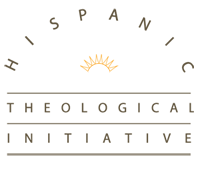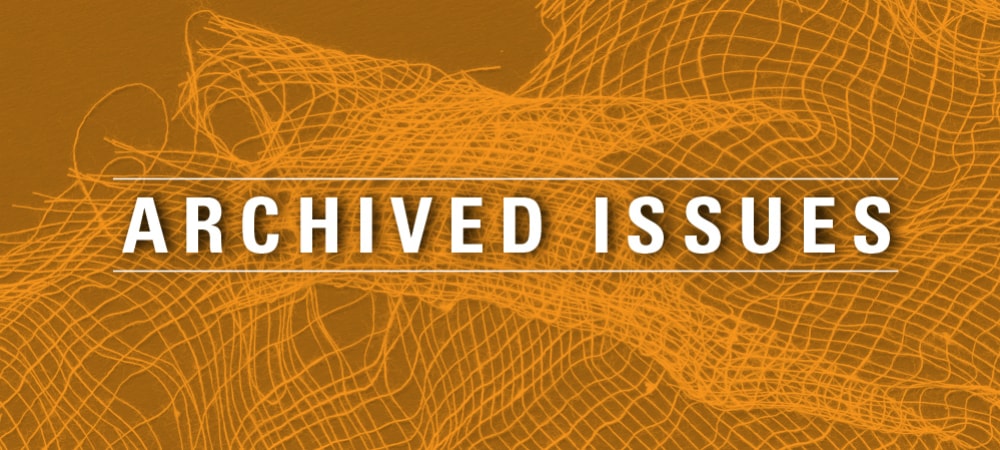Introduction
On November of 2018, La Comunidad of Hispanic Scholars of Religion gathered during the annual meeting of the American Academy of Religion (AAR) and Society of Biblical Literature (SBL) in Denver, Colorado. La Comunidad (literally, “the community”) is the oldest organization of Latinx scholars recognized by AAR/SBL, founded in 1989.[1] During the 2018 gathering, La Comunidad presented Dr. Fernando S. Segovia with the Lifetime Achievement Award in recognition of his “lifetime of scholarship and service on behalf of the Latinx community.”[2] In light of this award, and to highlight Segovia’s hermeneutical and methodological approaches to Scripture, particularly in postmodern and postcolonial critical analysis, panelists were invited to speak on “Fake News vs. Good News: Texts, Tweets and Technology,” from scholarly and grassroots perspectives. The meeting was sponsored in collaboration with the Latina/o and Latin American Interpretation Group, and co-presided by Dr. Ahida Pilarski (St. Anselm College) and Dr. Loida I. Martell (Lexington Theological Seminary). This issue of Perspectivas is proud to include the papers presented by the panelists in 2018.
Scripture is an important interlocuter in the elaboration of faith and practice in the Latinx community, and thus in the articulation of their theologies and ethical principles. Latinx scholars have long noted the way the community reads Scriptures in an organic way, becoming a “living” and a lived word. Over the years Catholic and Protestant scholars have reiterated this organic approach to Scripture. In 2013, Efrain Agosto published the findings from a comprehensive study that he and others undertook, interviewing various Protestant, Catholic, and Muslim groups to determine how grassroots communities used and read Scripture. Their findings indicate that Scripture was invariably authoritative for these varied Latinx religious communities—however differently they might define “authoritative.”[3] Nevertheless, given the current political, social, and religious environment, texts, including biblical texts, have taken on a degree of “elasticity” in meaning. Social media has contributed to this phenomenon. As such, the veracity and value of what had been identified as “authoritative texts,” however one defines these, are being questioned in new ways. The terminology of “fake news”—begun as a self-serving means to justify illicit behavior—has now entered the popular lexicon and led to the need to discern the veracity of heretofore unquestionable, or at the very least, valued source material. To this end, we invited our panelists to speak on these issues. While each approached the general theme in different ways, there are two points that all three underscore. First, they recognize that the term of “fake news” is a politically expedient one that hides from view the colonization and marginalization of communities, and their urgent issues. “Fake news” is, in effect, a camouflage that hides “non-news”—the unreported crises, calamities, and tragedies that face oppressed communities in the United States of America and the world.[4] Our panelists thus insist on broadening the term “fake news” to re-examine it through the lenses of postcolonial critical analysis. Fernando S. Segovia’s methodology proves to be fruitful for them in this regard. Second, precisely because of this silencing and invisibilization, our panelists seek the voices of others, whether through “collaborative plurality,” grassroots memes, or by ensuring that we create a world where “many worlds” fit and “different tongues” can be spoken. It is in the dialogical process of plurality where we can we can allow ourselves to be interrogated critically for the “blind spots” of bias as well as interrogate others and be assessed through a hermeneutical method that to some extent guards against the creation of “fake news,” “alternative facts,” and tools for oppression.
The first essay titled “The Bible and Global-Systemic Criticism in the Age of ‘Fake News’” is presented by Dr. Jacqueline M. Hidalgo, associate professor of Latina/o Studies and Religion at Williams College in Massachusetts. In her essay, Hidalgo celebrates the work of Fernando S. Segovia by broadening the terminology of “fake news” from its narrow interpretive confines that limits the interrogation of news to determine veracity or falsehood for political ends. Rather, she proposes that Segovia’s critical analyses of hermeneutical process itself, as well as of texts, provides us a different way of approaching texts—to wit, to interrogate the perspective and location of the interpreter and demand a process of “collaborative plurality”. This process is even more critical given the fact that, fake news has been used historically to advance the purposes of those in power and to dominate, marginalize, and erase others. Indeed, biblical texts such as those in the book of Revelation are attempts to respond to imperial “fake news” about Roman pax et securitas by offering a counternarrative about One who commands the world who is greater than Caesar. Offering such a counternarrative is part of a process of “crisis and catharsis” that Hidalgo considers congruent with Segovia’s postcolonial analysis because it is attentive to power dynamics. Nevertheless, simply posing a counternarrative is insufficient. Hidalgo notes how Empire has used even biblical counternarratives for its own end, and thus the Bible itself has become “fake news,” used to justify enslavement and genocide of whole peoples. Hidalgo thus suggests that Segovia’s methodology is critical because it acknowledges 1) that all worlds are constructed, 2) that the hermeneut must always also be critical of who they are and their social location, and 3) and therefore that this demands a collaborative plurality that allows us to become aware of our limitations.
The second essay is written by Dr. Corinna Guerrero, a lecturer in the Religious Studies Department at Santa Clara University in San Francisco.[5] Guerrero’s article, titled “Competing Narratives, Memes, and Going Viral as Socio-Theological Reflection and Resistance for USA Latinxs communities: a Hebrew Bible Perspective,” draws an intriguing and creative parallel between the meme’s of social media and how Scripture, particularly Hebrew Bible (First Testament) texts play similar roles. She begins by contrasting the apparent lack of familiarity of, and interaction with, Scripture demonstrated by Latinx Christians (and Jews) versus their familiarity with social media, and particularly their access to messages conveyed by memes. She defines a meme as “a visio-textual image or video that presents and counter-presents or re-presents at the same time.” Guerrero’s primary argument is that as memes are used as the sites of resistance and counter-narrative that resist imperial, colonizing, and oppressive social forces and stereotypical narratives couched in racial, heterosexist, and otherwise demeaning forms, so biblical pericopes, particularly those found in First Testament, are often used “as a newly reimagined place for socio-theological reflection [that] can offer US Latinxs resistance building strategies grounded in a biblical faith.” She concludes, on one hand, with an exhortation to evaluate how we can further integrate the use of social media in the face of shifting social and political conditions, particularly those that threaten U.S.A. Latinx agency; and, on the other, to encourage greater utilization of Scripture, especially Hebrew Bible as an intersecting conversation partner.
In the last essay of this roundtable, Dr. Santiago Slabodsky continues with Hidalgo and Guerrero’s challenge to hear not simply alternative voices, but more importantly diverse voices in his essay titled “Speaking in Other Tongues: Fernando Segovia’s Contributions to Discerning ‘Fake News.’” Slabodsky, the Florence and Robert Kaufman Endowed Chair in Jewish Studies at Hofstra University in New York, uses Segovia’s analysis of Acts 2:4–5 to underscore the importance of a multitude of diverse voices that arise from marginalized and invisibilized groups who have been stereotyped as “barbaric,” and thus considered to be of no consequence. These diverse voices are characterized by the fact they do not seek uniformity nor do they impose a singular “truth.” In contemporary times, these voices often use social media and the internet networks. Slabodsky contrasts such movements that speak to power with those that espouse “fake news.” The latter arise from centers of power, whether it be voices from imperial Roman forces, or in the contemporary landscape from neofascism, Trumpism, or neoliberal capitalism. One must be careful, avers Slabodsky, not to confuse the Islamophobic, anti-Semitic, misogynist voices who use the same networks of democratizing multitudes and who purport to speak on behalf of the disenfranchised and powerless. While they have “appropriated the typical narratives of marginalized communities” to raise the specter of “white genocide,” their “alternative facts” only function synergistically with narratives of “fake news” conveyed by those in power to further suppress the truly marginalized. Contrary to the truth they purport to convey, in reality what they seek is to control the message, to reduce it to a univocal truth, and to elevate a messiah-like figure. Thus we must hold in suspicion movements that claim to speak from the margins but ultimately, silence the diversity of democratizing voices that arise from it. Supporting a multitude of diverse voices is crucial because they serve to counter totalitarianism and monopolies on power. Slabodsky concludes by citing a rallying call of the Zapatista movement: “Vamos a crear ‘un mundo donde quepan muchos mundos’(let us create a world where many worlds can fit).”
It is the hope of La Comunidad in collaboration with the editors of Perspectivas that, these essays can provide a means to engage in conversations about how to critically gauge texts—not just biblical texts but oral and written texts. Amid competing voices, Pontius Pilate asked Jesus, “What is truth?” (John 18:38). Perhaps, as Latinx scholars, what we can provide are better questions: “what is right, and good, and life-giving?” and thus provide guidance to the Church, and a society at large that seeks “good news.”
Editorial Note:
The following three essays are part of the Special Edition roundtable on “Fake News vs. Good News: Texts, Tweets and Technology”
Roundtable Essay #1:
Roundtable Essay #2:
Roundtable Essay #3:



